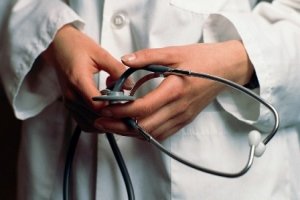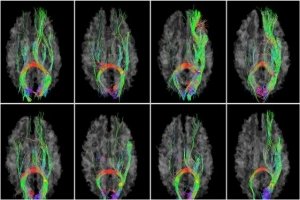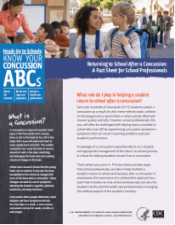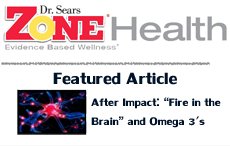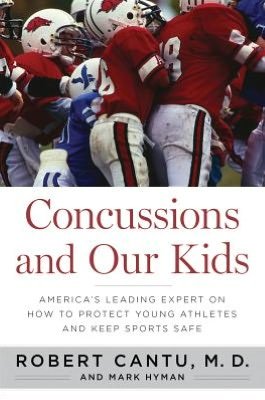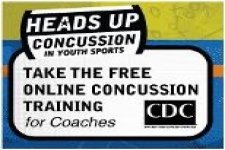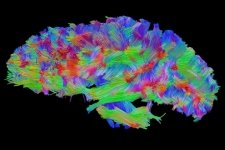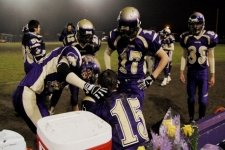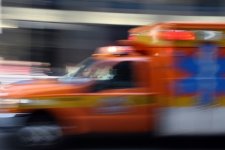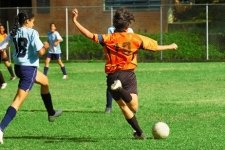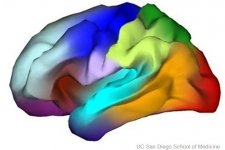Amino acids may restore concussion's chemical imbalance
- Created on Wednesday, 04 January 2012 19:40
- Last Updated on 16.01.2013
- Published Date
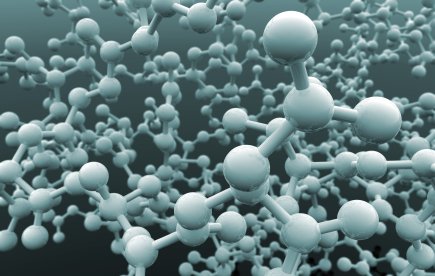 Concussions are often called the "invisible" injury because they are usually not detectable by the average CT scan or MRI. Even so, it is often very apparent that something is wrong. That "something" is often defined as a metabolic imbalance, created by the impact of the brain against the skull. Healing means waiting for potassium, calcium, and glucose to return to their rightful places and proportions in the brain.
Concussions are often called the "invisible" injury because they are usually not detectable by the average CT scan or MRI. Even so, it is often very apparent that something is wrong. That "something" is often defined as a metabolic imbalance, created by the impact of the brain against the skull. Healing means waiting for potassium, calcium, and glucose to return to their rightful places and proportions in the brain.
Amino acids may lend a helping hand.
In animal studies, researchers at the University of Pennsylvania discovered that administering three different amino acids restored the neurochemical balance and cognitive ability affected by the injury.
Peter LeRoux, MD, FACS, associate professor of Neurosurgery in the Perelman School of Medicine at the University of Pennsylvania, was awarded a 3-year, $250,000 Dana Foundation Clinical Neuroscience grant, to conduct a study using branch chain amino acids to treat concussion in athletes.
BCAAs are needed to produce two neurotransmitters -- glutamate and gamma-aminobutyric acid, or GABA, which function together to maintain an appropriate balance of brain activity. Glutamate excites neurons, stimulating them to fire, while GABA inhibits the firing. Too much excitement or, too little, and the brain doesn't work properly. A TBI upsets the balance.
With this grant funding from the Dana Foundation, Dr. LeRoux and colleagues Akiva Cohen and Penn Neurology resident Matthew Kirschen MD, PhD, will continue investigation of dietary BCAAs in patients with sports related concussion.
This is the first time that any faculty member in Neurosurgery at Penn has received a grant from the Dana Foundation, the private philanthropic organization that supports clinical research in neuroscience and neuroimmunology and their interrelationship in human health and disease.
###
Penn Medicine is one of the world's leading academic medical centers, dedicated to the related missions of medical education, biomedical research, and excellence in patient care. Penn Medicine consists of the Raymond and Ruth Perelman School of Medicine at the University of Pennsylvania (founded in 1765 as the nation's first medical school) and the University of Pennsylvania Health System, which together form a $4 billion enterprise.
Penn's Perelman School of Medicine is currently ranked #2 in U.S. News & World Report's survey of research-oriented medical schools and among the top 10 schools for primary care. The School is consistently among the nation's top recipients of funding from the National Institutes of Health, with $507.6 million awarded in the 2010 fiscal year.
The University of Pennsylvania Health System's patient care facilities include: The Hospital of the University of Pennsylvania -- recognized as one of the nation's top 10 hospitals by U.S. News & World Report; Penn Presbyterian Medical Center; and Pennsylvania Hospital – the nation's first hospital, founded in 1751. Penn Medicine also includes additional patient care facilities and services throughout the Philadelphia region.
Penn Medicine is committed to improving lives and health through a variety of community-based programs and activities. In fiscal year 2010, Penn Medicine provided $788 million to benefit our community.
Source: University of Pennsylvania, Perelman School of Medicine Press release 1/3/2012
Questions/comments? Contact Jean Rickerson at This email address is being protected from spambots. You need JavaScript enabled to view it.
Brain Health
It is rare for a sports-related concussions to result in a more serious injury such as a skull fracture or hematoma. Nonetheless, it pays to be aware that catastrpohic injuries do sometimes occur as ...
read more...-
CT scans may increase brain cancer risk
Children and young adults scanned multiple times by computed tomography (CT), a commonly used dia...
-
Sub-concussive impacts may affect learning
MINNEAPOLIS – A new study suggests that head impacts experienced during contact sports such as ...
-
Physical activity boosts learning
INDIANAPOLIS – School administrators looking to restructure the academic schedule should consid...




Neuroscience
Athens, Ga.- University of Georgia researchers have developed a map of the human brain that shows great promise as a new guide to the inner workings of the body's most complex and critical organ.
...
read more...-
Does CTE infect neuron to neuron?
NFL Hall of Famer "Iron Mike" Webster's life ended in 2002 when he suffered a heart attack at age...
-
Progesterone seems to protect neurons after injury
It is not yet known why girls suffer concussions at a higher rate than boys. The most prevalent...
-
Amino acids may restore concussion's chemical imbalance
Concussions are often called the "invisible" injury because they are usually not detectable by t...
Resources
- School professionals play an important role in the health of all students. Recognizing the signs and symptoms of concussion is important, as is managing their return to school ...
- CDC's Concussion Training for Clinicians
-
Concussion Education Video Programs - Free and Easy
Parents, athletes, coaches and medical professionals have access to concussion education created...
-
New concussion guidelines for team physicians
INDIANAPOLIS – Team physicians who assess and treat athletes suspected of concussion have new ...
quick links
Latest News
Concussions Occur...
...in Any Sport
REMOVE athlete from play
REFER to medical provider
REST no sports, no texting/TV
RETURN only with doctor's OK
Source: Children's Hospital Boston, Sports Concussion Clinic












